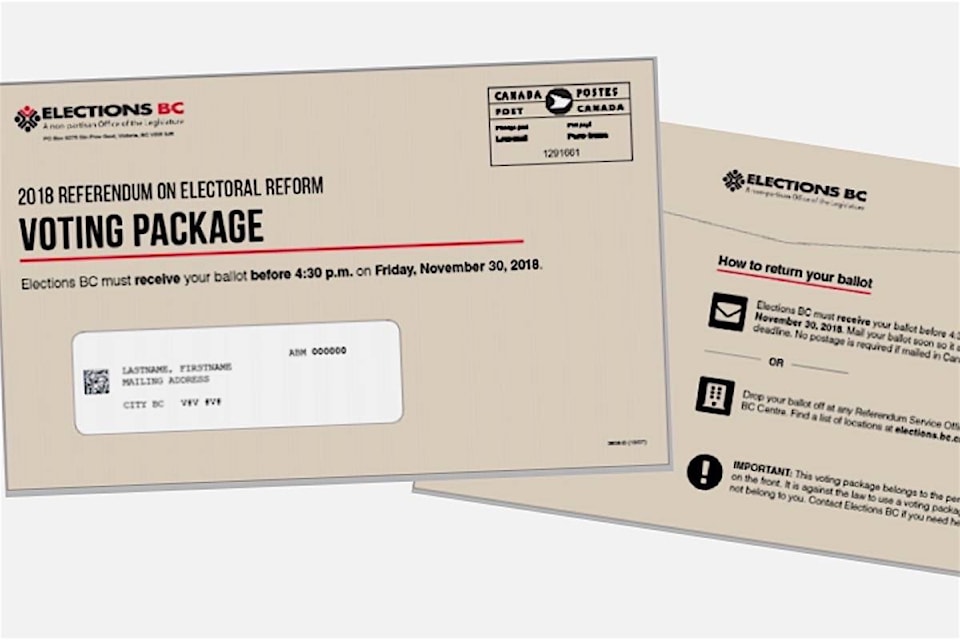Mail-in voting packages are on their way to registered voters across B.C., with five weeks to fill them out and mail them back in with your choice on whether to change the electoral system for the next provincial election.
Voters who don’t receive a package by Nov. 2 should ask for one, by visiting the Elections B.C. website at elections.bc.ca/ovr or calling 1-800-661-8683. Service B.C. offices around the province can also register voters and provide referendum packages.
.@ElectionsBC not expecting delay from Canada Post rotating strikes #bcpoli #ProRep pic.twitter.com/qKvGykCI9A
— Tom Fletcher (@tomfletcherbc) October 22, 2018
The ballot is in two parts, with the first one a choice between the existing “first past the post” (FPTP) election system and changing to a “proportional representation” (PR) system. FPTP systems are used in Canada, the U.S., Australia and France. In B.C., a provincial election is really 87 separate elections, with the candidate with the largest number of votes becoming the MLA for each constituency.
Voters can answer just the first question if they choose. Or they can continue to the second part, and rank three different PR voting systems according to their preference.
RELATED: Canada Post union begins rotating strikes in Victoria
Elections B.C. has prepared a voting guide and a series of short videos that explain the workings of FPTP and each of the three options, dual member proportional, mixed member proportional and rural-urban proportional.
Maps of proposed new voting districts and other key details of how the new systems would work are not available until after the referendum.
Completed ballots must be received at Elections B.C. by 4:30 p.m. on Friday, Nov. 30. Instructions and key dates are in each voting package, along with directions on how to fill out the ballot and mail it back.
The existing system tends to favour larger parties and majority governments. Proportional representation makes it easier for small parties to win seats, and coalitions or agreements are usually needed before a government can be formed. Constituencies are usually larger and multi-member.
Here is a brief description of each option:
• Dual member proportional, where neighbouring pairs of districts in B.C. would be combined into one two-member constituencies, except for the larger rural districts, which would remain unchanged.
• Mixed member proportional, which combines single-member districts with party list candidates, added to give each party the number of seats determined by their share of the province-wide vote in an election.
• Rural-urban proportional representation, with multi-member districts for urban and semi-urban areas, with voters choosing their MLA on a ranked ballot. In rural areas, a mixed-member proportional system using candidate lists chosen by parties would be used.
@tomfletcherbc
tfletcher@blackpress.ca
Like us on Facebook and follow us on Twitter.
